Lead generation is a vital aspect of any online business’s success. It’s the process of gathering essential information about visitors so that they can become leads you can nurture. The main goal of this practice is to get visitors interested in the services and products you offer and guide them down the sales funnel to convert them into buying customers. One of the main problems we’ve seen companies struggle with is how to measure lead generation efforts.
In this article, we’ll elaborate on the best methods to track this process. You’ll know what aspects you should focus on by explaining the key metrics that need to be monitored.
We’ll also highlight the challenges, considerations, and best practices in lead generation measurement. Continue reading to discover the most useful ways of measuring leads to further improve your conversion rate!
How to Measure Lead Generation
Before you begin tracking your performance, you should know what data is most important for the process. So, what is lead generation KPI, and what is it used for? Simply put, KPIs are key point indicators that help businesses track their online efforts and success.
In terms of lead generation, these metrics are used to evaluate the effectiveness of the lead generation efforts to further optimize the tactics through data-driven decisions. Here are some lead generation metrics examples you should familiarize yourself with to prepare for the monitoring process:
- Total leads generated
- Lead quality
- Conversion rates
- Cost per lead
- Return on investment
- Time on page
- Bounce rate
- Website traffic
- Engagement
Total leads generated
The first metric you should know is the total number of leads generated. As the name implies, it tracks the total number of visitors interested in your services or products by providing their information. Since this number shows the raw volume of potential customers entering the sales funnel, it’s considered the foundation of lead generation tracking.
However, depending on your lead tactics, be wary that leads can come from multiple sources. For example, some visitors may have submitted their information to gain access to your newsletter or by completing a lead capture form. To ensure you’re tracking all capture points, it’s best to use CRM systems, which we’ll explain further in this article.
Lead quality
Next, lead quality is a metric used to track how likely it is to turn a lead into a paying customer. Although many companies focus on lead quantity, you should never overlook the importance of lead quality when evaluating your lead generation success.
The reason why we advise you to focus on high-quality leads is because they’re more likely to buy your product or service, resulting in higher generated revenue. Furthermore, the three main types of lead quality you may come across are the following:
- Cold lead: Has shown minimal interest in your products or services and needs further nurturing.
- Warm lead: Have shown slight interest and have engaged with your brand but are still not ready to make a purchase.
- Hot lead: Have shown strong interest in purchasing your products with high chances of conversion.
Even though there are multiple ways to measure lead quality, we recommend determining a lead quality scoring system where each behavior and attribute has a specific point value. By assigning positive, negative, and neutral attributes, you can collect and analyze the data to calculate the lead scores.
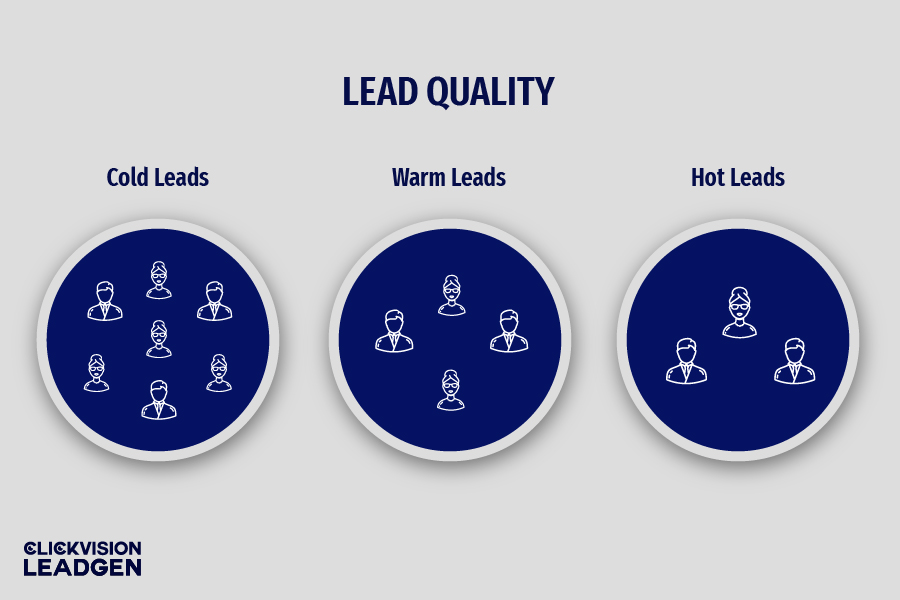
Conversion rates
Conversion rate is a commonly used term in SEO and marketing efforts. When it comes to lead generation, there are two types of conversion rates you can track.
First, you can use this metric to track how many people are completing the desired action on your website. This can include clicking the CTA button, completing the lead capture form, or signing up for your newsletter. To calculate these conversions, divide the number of leads with the total number of visitors and multiply them by 100.
Second, you can use lead conversion rates to track the number of your leads that convert into paying customers. This is often considered more important than normal conversions because it gives you insights into your strategies’ effectiveness.
They can also be used to set lead generation benchmarks, through which you can set realistic future goals based on previous data. To calculate lead conversions, you need to divide the number of total paying customers by the number of leads you’ve captured.
Cost per lead
Cost per lead is one of the most common B2B lead generation KPIs. It is used to determine the cost-effectiveness of your lead generation efforts.
Simply, it calculates the amount of money used to capture a single lead. The equation used to determine this number requires you to divide the total amount of money used for the lead generation campaign by the number of leads you’ve generated.
Cost Per Lead Calculator
Return on investment
The next important metric you should know is the return on investment, commonly called ROI. Since it’s used to measure the profitability of your lead generation efforts, it describes the revenue you’ve gained through the process in comparison to the amount of money spent on it. Regarding business success, the higher the ROI, the more revenue you generate with your operations.
To calculate this metric, you need to subtract the cost of the marketing efforts from the total revenue generated and divide it once again by the cost of the marketing efforts multiplied by 100. Thus, the simple formula is ROI = (Generated Revenue – Cost) / Cost x 100%.
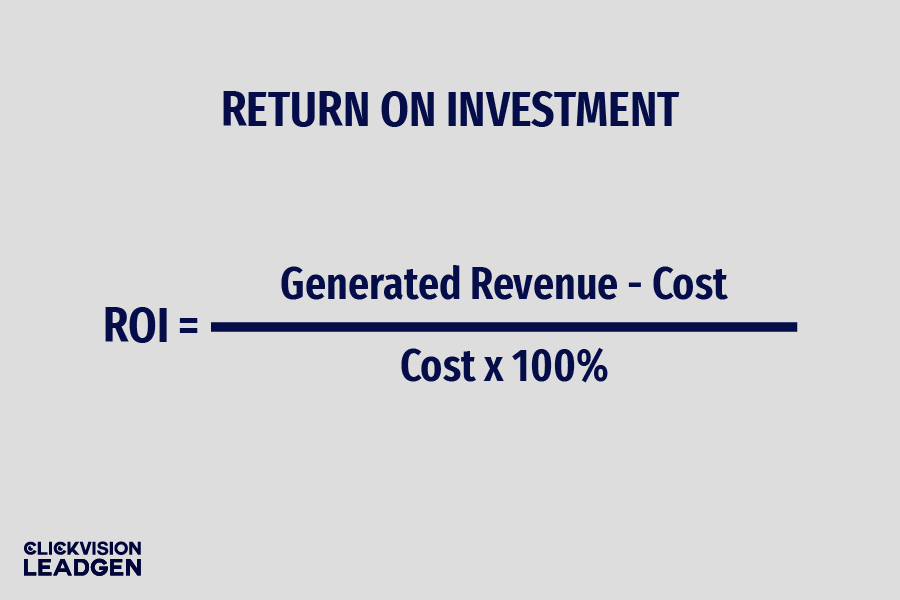
Time on page
The average time on page is another basic SEO metric used to determine the amount of time a visitor spends on your website. Regarding lead generation, these numbers show how much the audience engages with your business.
Thus, having visitors spend longer time on your website means that they have higher engagement which leads to potentially higher conversion rates. To calculate this metric, you need to divide the total time on the page by the total number of page views minus the number of exits.
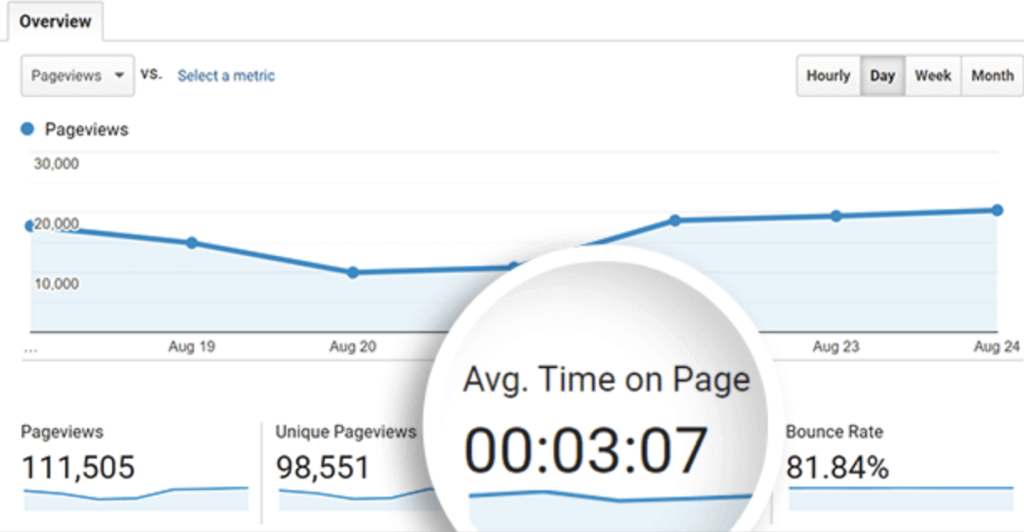
Source: cdn.optinmonster.com
Bounce rate
The bounce rate determines the number of people who leave your website after viewing only a single page. To ensure online business success, keep this number as low as possible. For lead generation purposes, this metric can indicate the primary level of engagement visitors have on your website.
If you notice that the bounce rate is high, it indicates that users don’t find what they’re looking for on your page. So, you’ll need to assess your website’s functionality and content to tailor it more to their needs and expectations.
Lowering the bounce rate often results in higher conversion rates because visitors are more likely to engage with your offers. To calculate this metric, you need to divide the number of one-page visits by the total number of visits and multiply it by 100.
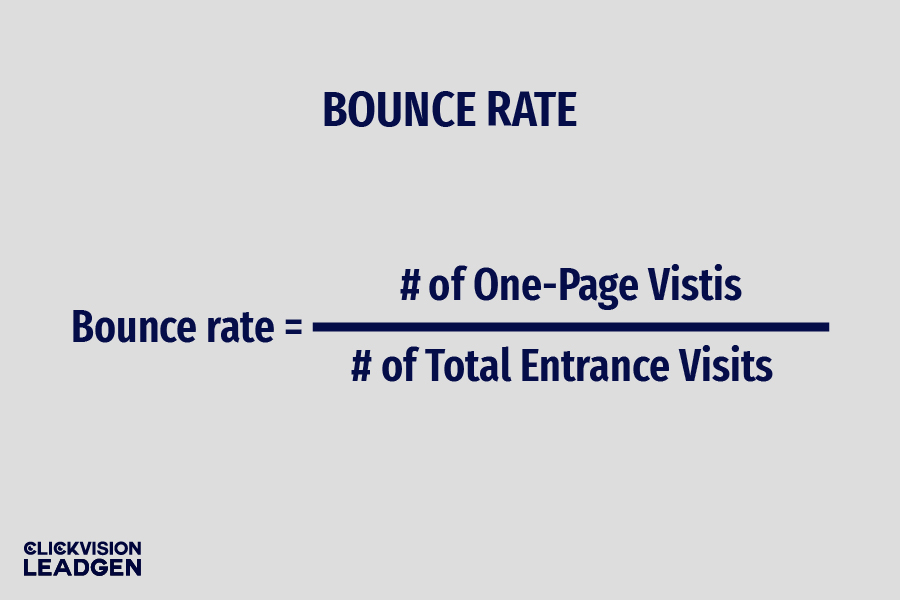
Website traffic
Website traffic is one of the base metrics you should track if you’re running a website. It shows how many users are accessing your website and its content. This metric is important for lead generation because higher website traffic means that you have more chances of capturing leads.
Furthermore, analyzing such traffic can give you insights into the user’s behavior, needs, and expectations, enabling you to optimize your lead capture tactics. Since traffic can come from various sources, you should always try to identify the best-performing options. Some source types you should know are the following:
- Organic traffic
- Direct traffic
- Paid traffic
- Social traffic
- Email traffic
To gain insight into your website traffic, you’ll need to monitor the sources from which the visitors are coming. You should also track unique users on your website, the total number of page views, and the average number of pages viewed per session.
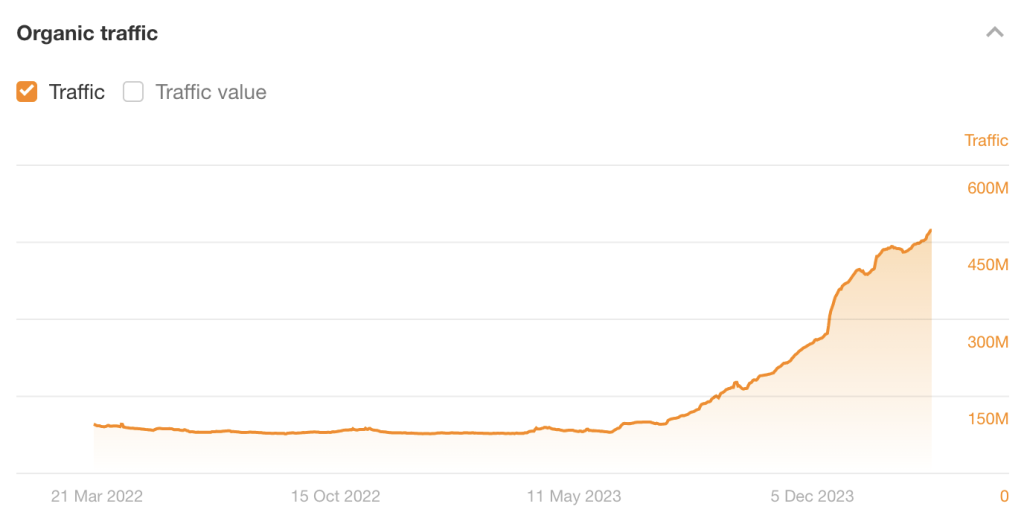
Source: ahrefs.com
Engagement
Lastly, you should track user engagement on your website. This metric shows how often visitors interact with the content on your website and indicates their interest in your products or services. Higher engagement levels generally lead to higher conversion rates, so capturing users as leads will be easier.
To calculate this metric, you need to divide the number of active users on your website with the total number of visitors within a given timeframe. You can also focus on additional user engagement metrics such as scroll depth, CTR (click-through rate), comments, and social shares.
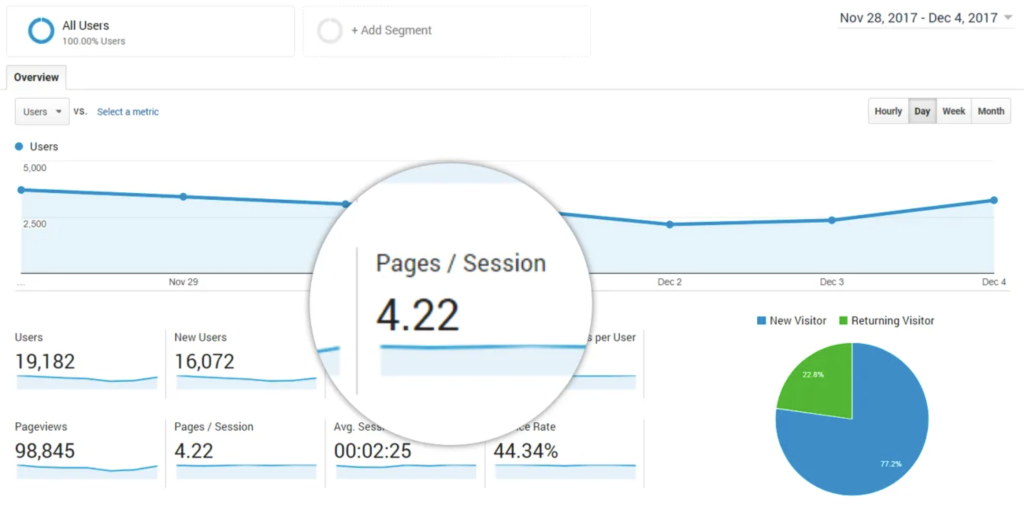
Source: boagworld.com
Methods for Tracking and Measuring Lead Generation
After elaborating on the key metrics used to track lead generation, we also want to inform you of the best ways to measure them. Even though businesses often choose their methods based on their needs and preferences, here are some of the best options to start evaluating your lead generation efforts:
- Website analytics
- CRM and marketing automation platforms
- Campaign tracking
- Surveys and feedback
Website analytics
The first way you can track the average leads generated is through website analytics. Platforms designed for this purpose use various tools and techniques to make the measuring process easier.
One of the best platforms for tracking your website analytics is Google Analytics. First, you’ll need to set up an account connected to your website and Google Ads if you’re implementing paid advertising as part of your strategy. Next, you need to define which actions are supposed to indicate a lead capture as conversions.
To do this, you’ll need to manually create a goal that tracks either destinations or events. If you’ve chosen destinations, you can lead the user to a specific page after submitting their information and use it to track the destination goals.
On the other hand, key events are used to track conversions and are tracked when the visitor performs a specific action. This can include clicking a CTA button, submitting a claim capture form, or signing up for newsletters. Lastly, this platform allows you to create sales funnels to track users’ paths before converting into leads.
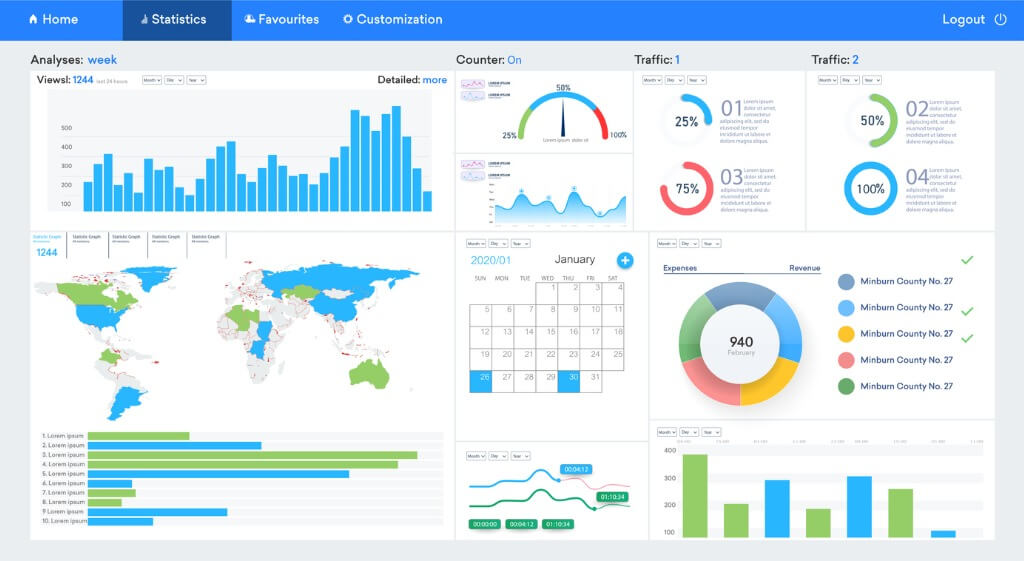
Source: solutions.trustradius.co
CRM and marketing automation platforms
The second way to monitor your lead generation efforts is through CRM and marketing automation. CRM systems, or Customer Relationship Management, rely on data analysis to research large volumes of information and monitor and analyze customer interactions.
Many businesses prefer this tracking method because it can manage leads from the primary contact to the conversion phase. Furthermore, such software has numerous features like customer journeys, automated lead nurturing, and detailed analytics.
Before you begin tracking your lead generation success, choosing the right platform that matches your business needs is important. The most popular CRM options are HubSpot, SalesForce, and Zoho. To better understand how these systems work, here are their most common functions:
- Capturing leads: CRMs may trace the origin of your leads by collecting data from various lead sources, including social media and registration forms.
- Scoring leads: CRMs can determine lead quality through a comprehensive scoring system. By analyzing the level of interest and behavior, you’ll identify whether the leads are cold, warm, or hot.
- Nurturing leads: Automate communication with leads to move them down the sales funnel.
- Conversions and reports: After tracking the lead’s conversion, you can create detailed reports to analyze and improve your efforts.
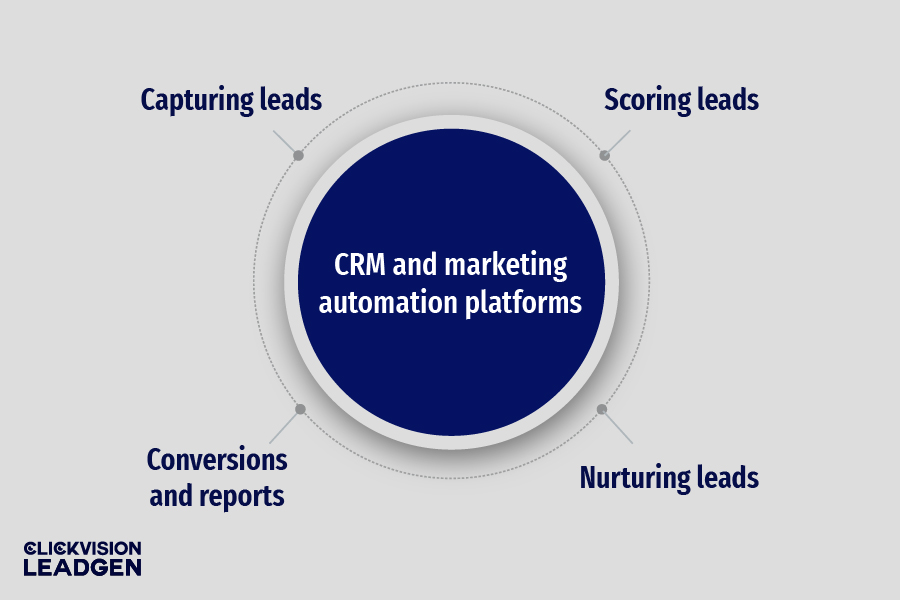
Campaign tracking
If most of your lead generation efforts are based on paid advertising, it’s important to implement efficient campaign tracking methods. One of the best ways to monitor leads generated by paid campaigns is by setting up UTM parameters.
These parameters, which are link elements, define the campaign, source, and medium. To better understand what UTM parameters consist of, here are the most common elements you’ll find in them:
- utm_source: used to identify the source where the traffic is coming from. Some examples are Facebook, Instagram, Google, and Twitter.
- utm_medium: Describes the type of medium the traffic is coming from. For example, it can be social (social media platforms), CPC, or email.
- utm_campaign: Specifies the campaign name so you can determine which marketing initiatives are responsible for the outcomes.
- utm_term (optional): Used to describe the specific keyword from the paid search.
- utm_content (optional): Used to differentiate between different types of content for your advertisement.

Surveys and feedback
The last lead generation tracking method you can try out involves surveys and feedback. Even though many companies hesitate to ask users for their feedback directly, there are various non-invasive methods to do so.
Gaining insights into how potential customers feel about your product, you can gather important data regarding their needs, preferences, and behaviors. Thus, strategically implementing surveys and feedback mechanisms can help qualify leads and refine future marketing strategies.
Before you begin conducting the surveys, you first need to define clear goals and objectives for the research. Then, based on your research objectives, you need to create easily understandable and concise questions that can successfully capture the needed data. You can also use lead capture tactics within the surveys to gather additional lead information.
Besides coming up with suitable questions, you should also focus on distributing the surveys in high-traffic places. For example, you can use social media platforms, email campaigns, or high-traffic website pages.
Once the surveys have been conducted, you should collect, organize, and analyze all the gathered information. If you’re using a CRM system, you can easily integrate popular survey tools such as SurveyMonkey and Typeform to sync the data and record new leads.
Challenges and Considerations in Lead Generation Measurement
As with any business operation, there are several challenges and considerations you should know when measuring leads. The ones that have the biggest influence on your lead generation success are the following:
- Data accuracy and integrity: Since lead capture data comes from the information real-life people provide, many businesses encounter inaccurate or duplicate information. This common human error can affect the overall metrics and analysis, alongside the ability to qualify the leads.
- Attribution modeling: One of the most difficult tasks in monitoring lead generation is identifying which marketing channel has led the visitor to conversion. Users can often interact with your brand non-linearly, resulting in multiple touchpoints across various channels.
- Integration and collaboration: Many businesses rely on various tool integrations to maximize their lead-tracking process. However, integrating multiple tools can be challenging because syncing data across different platforms can be problematic.
Best Practices for Effective Lead Generation Measurement
Ultimately, we want to mention some of the best practices you should know for effective lead generation measurement. Based on our experience in the field, some of the most crucial aspects of this process are the following:
- Defining clear goals and objectives
- Establishing standardized lead generation KPIs
- Implementing robust tracking systems
- Consistent monitoring
- Continuous improvement
Conclusion
After discovering how to measure lead generation and the most important metrics in the process, it’s up to you to decide which tracking methods suit your circumstances best. However, we recommend you choose the most appropriate options based on your predefined goals and objectives. Once you’ve chosen, remember that lead generation monitoring requires frequent tracking and continuous improvement as your company grows.
Since we understand that generating and tracking leads may be one of the most challenging aspects of business operations, we offer inbound lead generation services tailored to your industry. Choosing our experience and expertise at CLICKVISION Lead Gen will result in hot, high-quality leads ready to convert into loyal customers.
So, contact our team today and discover how we can optimize your lead generation process!

Dimitar is a seasoned marketing specialist and the visionary behind CLICKVISION. With over 10 years in digital marketing, he excels in crafting marketing strategies that boost rankings, which in return increase leads, conversions, sales, profits, and ROI.
